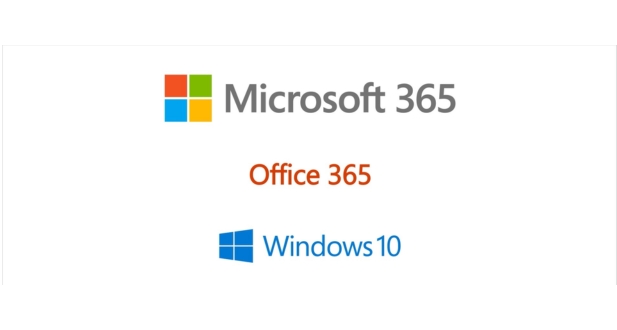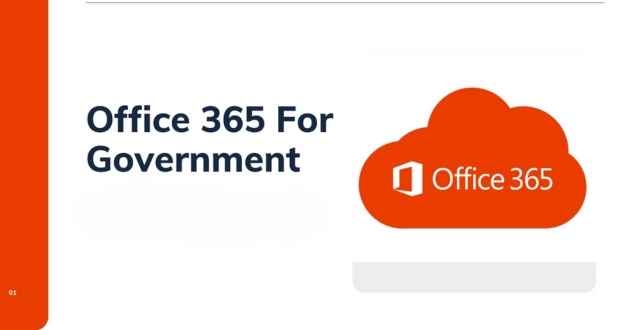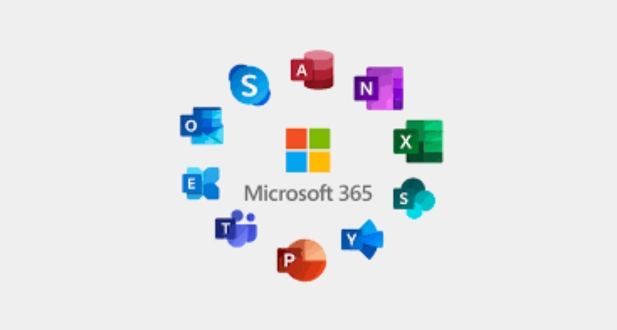Introduction:
Microsoft 365, formerly known as Office 365, is a comprehensive suite of cloud-based productivity and collaboration tools developed by Microsoft. It encompasses a range of applications and services designed to enhance workplace efficiency, communication, and collaboration. Microsoft 365 includes popular applications like Word, Excel, PowerPoint, Outlook, Teams, and more, providing users with a versatile set of tools to create, communicate, and collaborate seamlessly.
Overview of Microsoft 365:
Microsoft 365 is not just a collection of standalone applications; it is a holistic platform that integrates productivity tools, security features, and device management capabilities. It operates on a subscription-based model, offering users the flexibility to access the latest features and updates seamlessly. The platform is cloud-centric, meaning that users can access their files, applications, and collaborative tools from anywhere with an internet connection. This cloud-based approach enhances mobility, enabling users to work across devices and locations.
Microsoft 365 is not limited to traditional desktop applications; it embraces the modern workplace by providing web-based versions of its applications and facilitating real-time collaboration. With features like co-authoring, version history, and cloud storage through OneDrive, Microsoft 365 supports a dynamic and connected work environment.
Importance of Choosing the Right Pricing Plan:
Selecting the appropriate Microsoft 365 pricing plan is crucial for organizations to optimize their investment and align the suite’s features with their specific needs. Microsoft offers various plans tailored to different user requirements, ranging from individual users and small businesses to large enterprises. The right pricing plan ensures that organizations have access to the necessary tools and services without unnecessary costs.
The choice of a pricing plan also influences factors such as security features, compliance capabilities, and device management options. By understanding their unique requirements, organizations can tailor their Microsoft 365 subscription to align with their goals, whether it be enhancing collaboration, improving security measures, or streamlining business processes.
Microsoft 365 is a powerful platform that goes beyond traditional office applications, fostering a modern and collaborative work environment. Choosing the right pricing plan is a strategic decision that directly impacts how organizations leverage the full potential of Microsoft 365 to meet their specific needs and objectives.
Understanding Microsoft 365 Plans
Microsoft 365 offers a range of subscription plans tailored to meet the diverse needs of businesses and enterprises. These plans are categorized into Business and Enterprise plans, each designed to provide a suite of productivity tools and services.
Business Plans:
- Microsoft 365 Business Basic:
Microsoft 365 Business Basic is an entry-level plan suitable for small businesses. It includes essential productivity apps such as Microsoft Outlook, Word, Excel, and PowerPoint, along with cloud services like OneDrive and Microsoft Teams. This plan is ideal for organizations looking for basic communication and collaboration tools.
- Microsoft 365 Business Standard:
This plan builds on the Basic version by offering additional features. In addition to the core applications, users get access to premium Office apps on multiple devices. Microsoft 365 Business Standard is well-suited for businesses that require more advanced collaboration tools and a richer set of applications.
- Microsoft 365 Business Premium:
Positioned as a comprehensive business solution, Microsoft 365 Business Premium combines the features of Business Basic and Business Standard. It includes advanced security features and device management capabilities, making it an ideal choice for organizations with higher security and compliance requirements.
Enterprise Plans:
- Microsoft 365 Apps for Enterprise:
Formerly known as Office 365 ProPlus, this plan is focused on providing the full suite of Office applications for larger enterprises. It allows users to install Office apps on multiple devices and includes features for collaboration and communication.
- Microsoft 365 E3:
Geared towards large enterprises, Microsoft 365 E3 includes advanced security and compliance features. It offers a comprehensive set of productivity tools, collaboration services, and advanced security capabilities, making it suitable for organizations with complex requirements.
- Microsoft 365 E5:
Positioned as the most advanced plan, Microsoft 365 E5 includes all the features of the E3 plan with additional advanced security and compliance features. It provides enhanced analytics, threat protection, and voice capabilities, making it suitable for organizations with the highest security and regulatory needs.
The Microsoft 365 suite offers a scalable set of plans catering to businesses of various sizes and needs, ensuring that organizations can choose the right combination of productivity tools and security features to meet their specific requirements.
Feature Comparison Across Plans
Core Office Applications:
One of the key aspects when comparing different plans is the suite of core office applications offered. This typically includes word processing, spreadsheet, and presentation software. Users often evaluate the features, functionality, and user interface of these applications to ensure they meet their specific business needs. Compatibility and seamless integration across platforms are also crucial for a smooth workflow.
Email and Communication:
Effective communication is vital for any organization, and the email and communication features play a significant role in plan evaluation. Users assess the capabilities of email platforms, including features such as security, collaboration tools, and integration with other communication channels. The ability to scale with the growing needs of the business is another critical factor in this category.
Cloud Storage and Collaboration:
With the increasing reliance on cloud-based solutions, the availability and efficiency of cloud storage and collaboration tools become paramount. Users look for plans that offer sufficient storage capacity, file-sharing capabilities, version control, and collaborative editing features. Accessibility and synchronization across devices are also important considerations for businesses with remote or mobile workforce.
Security and Compliance:
Security is a top concern for organizations, especially when dealing with sensitive data and confidential information. Evaluating the security features of each plan is crucial, including measures such as data encryption, multi-factor authentication, and regular security updates. Additionally, businesses operating in regulated industries may prioritize plans that adhere to specific compliance standards to ensure legal and regulatory requirements are met.
Advanced Analytics and Business Intelligence:
For organizations seeking deeper insights into their operations, the availability of advanced analytics and business intelligence tools is a key consideration. Users evaluate the analytics capabilities of each plan, looking for features like data visualization, reporting tools, and integration with other business applications. The goal is to leverage data-driven decision-making, so plans offering robust analytics support are often preferred by businesses with a focus on strategic growth and optimization.
When comparing different plans across various features, businesses weigh the importance of core office applications, communication tools, cloud storage, security measures, and advanced analytics. The ultimate choice depends on the specific needs and priorities of the organization, ensuring that the selected plan aligns with its operational requirements and strategic objectives.
Specialized Plans for Education and Government in Microsoft 365:
Microsoft offers specialized plans tailored to meet the unique needs of both the education sector and government entities. These specialized plans, namely Microsoft 365 Education Plans and Microsoft 365 Government Plans, cater to distinct requirements, ensuring optimal productivity, collaboration, and security within these specific domains.
Microsoft 365 Education Plans:
Microsoft 365 Education Plans are designed to empower educational institutions, from primary schools to universities, with a suite of tools and services that enhance the learning and teaching experience. These plans include a range of applications such as Microsoft Teams for virtual classrooms, OneNote for collaborative note-taking, and various productivity tools that facilitate seamless communication and collaboration among students, educators, and staff.
The Education Plans also focus on providing a secure and compliant environment for sensitive student data. Features like identity and access management, document sharing controls, and compliance reporting contribute to maintaining a safe and regulated digital space for educational activities. Microsoft 365 Education Plans aim to support modern learning methods and foster innovation within the educational landscape.
Microsoft 365 Government Plans:
Microsoft 365 Government Plans are specifically crafted to address the unique needs and regulatory requirements of government agencies at various levels. These plans prioritize security, compliance, and collaboration within a government setting. They provide tools and services that enable government employees to work efficiently while adhering to strict security protocols.
Government Plans include features like advanced threat protection, secure communication and collaboration through platforms like Microsoft Teams, and compliance tools to meet industry regulations. These plans are built with a keen understanding of the sensitive nature of government operations, ensuring that data remains confidential and the communication channels are secure.
Both Microsoft 365 Education Plans and Microsoft 365 Government Plans are specialized offerings that go beyond the standard business suites. They are customized to meet the diverse needs of educational institutions and government agencies, respectively, providing tailored solutions for productivity, collaboration, and security within these specific sectors.
Understanding Subscription Models:
Subscription models play a crucial role in various industries, offering flexibility and value for both businesses and consumers. One fundamental distinction within subscription models lies in the duration of the commitment: monthly versus annual subscriptions. Each option comes with its own set of benefits and drawbacks, catering to different preferences and needs.
Monthly subscriptions provide a short-term commitment, allowing users to access a service or product on a month-to-month basis. This flexibility is particularly appealing for those who may not want a long-term commitment or need a service temporarily. Customers can easily adapt to changing needs and preferences, as they have the option to cancel or modify their subscription every month. This agility is valuable in dynamic environments where requirements may evolve rapidly.
On the other hand, annual subscriptions require a commitment for a full year. This model often comes with cost savings compared to monthly plans, as businesses may offer discounts or incentives to encourage customers to commit to a longer duration. Annual subscriptions are suitable for individuals or businesses with more stable and predictable needs, as they lock in the service for an extended period. This model promotes customer loyalty and allows businesses to forecast revenue more accurately.
The benefits of monthly subscriptions include flexibility, adaptability, and the ability to easily test a service. Users can explore the offering without a significant upfront commitment. However, the drawback lies in the potential for a higher overall cost compared to an annual plan.
Annual subscriptions offer cost savings, predictability, and the convenience of not having to worry about monthly renewals. Nevertheless, the drawback is the inflexibility inherent in a year-long commitment, which may not suit those with fluctuating requirements.
Ultimately, the choice between monthly and annual subscriptions depends on the specific needs and preferences of the consumer or business. The decision may involve weighing factors such as budget considerations, the nature of the service, and the level of commitment desired.
Factors Influencing Pricing:
User Count and Scaling:
One of the primary factors influencing the pricing of a service or product is the user count and scaling options. Many pricing models are designed to accommodate different tiers based on the number of users a customer needs to support. As user count increases, the pricing may follow a tiered structure, offering economies of scale for larger organizations. Additionally, scalability is a crucial consideration. Services that allow easy scalability without significant cost implications can be attractive to businesses that anticipate growth.
Advanced Features and Add-ons:
The inclusion of advanced features and add-ons is another key determinant of pricing. Software or services often come with a basic set of functionalities at a standard price, but additional features or premium capabilities may be available at an extra cost. This allows users to customize their experience based on specific needs. The pricing structure may be designed to cater to different user requirements, offering a modular approach where users pay for the features that align with their business demands.
Integration with Other Microsoft Services:
The level of integration with other Microsoft services can significantly impact pricing. Seamless integration with an ecosystem of related tools and services enhances overall user experience and productivity. Businesses that heavily rely on Microsoft services may find added value in solutions that integrate seamlessly with their existing workflows. The depth and breadth of integration, as well as the interoperability of the product with other Microsoft tools, can contribute to a higher perceived value and, consequently, a potentially higher price point.
When evaluating pricing for a product or service, businesses need to consider factors such as user count, scalability, inclusion of advanced features, and the level of integration with other services. These considerations ensure that the chosen solution not only meets the current needs of the organization but also allows for flexibility and growth in the future.
Tips for Cost Optimization
Cost optimization is a critical aspect of managing resources efficiently in any business or IT environment. Here are some tips for effective cost optimization:
Identifying Unused Licenses:
One key strategy for cost optimization is regularly auditing and identifying unused licenses. Many organizations acquire more licenses than necessary, leading to unnecessary expenses. By periodically reviewing user accounts and application subscriptions, administrators can identify inactive users or underutilized software licenses. Once identified, these unused licenses can be reclaimed or reallocated, preventing unnecessary costs and improving resource utilization.
Right-sizing Licenses Based on User Roles:
Tailoring licenses to match specific user roles is another effective way to optimize costs. Different users within an organization may have varying needs when it comes to software or service access. Instead of providing everyone with the same feature-rich license, administrators can assess the requirements of each user or department and allocate licenses accordingly. This ensures that users have access to the tools they need without overpaying for features they don’t use.
Exploring Discounts and Incentives:
Cloud service providers often offer discounts and incentives that organizations can leverage for cost savings. It’s essential to stay informed about any promotions, discounts, or loyalty programs provided by the cloud service provider. Some providers offer reserved instances or long-term commitments that come with cost advantages. By taking advantage of these opportunities, organizations can reduce their overall expenses while maintaining the same level of service.
Implementing these tips for cost optimization is crucial for organizations seeking to maximize the value of their investments in cloud services. Regularly reviewing and adjusting licensing strategies, along with staying informed about available discounts, contributes to a more efficient and cost-effective use of resources.
Microsoft 365 for Small Businesses
Tailoring Plans for Small Business Needs:
Microsoft 365 offers a range of productivity and collaboration tools tailored to meet the specific needs of small businesses. These plans are designed to provide essential applications and services that enhance efficiency, communication, and collaboration. One notable feature is the scalability, allowing small businesses to choose plans that align with their size and requirements. Whether it’s access to core applications like Word, Excel, and Outlook, or cloud-based services like OneDrive and SharePoint, Microsoft 365 ensures that small businesses have the tools necessary to succeed.
Moreover, Microsoft 365’s small business plans often come with simplified management interfaces, making it easier for organizations with limited IT resources to set up and maintain their digital workspace. The seamless integration of applications and services within the Microsoft ecosystem further streamlines workflows, providing a cohesive experience for users. This adaptability and customization make Microsoft 365 a versatile solution for the diverse needs of small businesses, promoting productivity and collaboration without unnecessary complexity.
Cost-Effective Strategies for Startups:
For startups and small businesses, cost-effectiveness is a critical consideration. Microsoft 365 addresses this by offering subscription plans that provide a cost-effective alternative to traditional software licensing models. Instead of hefty upfront costs, businesses can opt for monthly or annual subscription plans, allowing them to manage their budgets more efficiently. This subscription-based model often includes automatic updates, ensuring that businesses always have access to the latest features and security patches without incurring additional costs.
Additionally, Microsoft 365 eliminates the need for extensive infrastructure investments. By leveraging cloud-based services, startups can benefit from scalable solutions without the burden of maintaining on-premises servers. This not only reduces initial setup costs but also provides the flexibility to scale resources up or down based on business growth.
Microsoft 365 for small businesses is characterized by its flexibility, scalability, and cost-effectiveness. By tailoring plans to meet the specific needs of small enterprises and offering budget-friendly subscription models, Microsoft 365 empowers startups and small businesses to embrace modern digital tools without compromising their financial sustainability.
Challenges and Considerations:
In the realm of Microsoft 365 implementation, organizations encounter various challenges and considerations that are integral to navigating for successful integration and sustained operation. Two critical aspects include common pitfalls in choosing Microsoft 365 plans and adapting to changes in business requirements.
Common Pitfalls in Choosing Microsoft 365 Plans:
One of the challenges organizations face is the selection of the most suitable Microsoft 365 plan for their specific needs. Common pitfalls in this decision-making process include underestimating the required features, overestimating budget constraints, or failing to align the chosen plan with the organization’s long-term goals. It is essential to conduct a thorough analysis of business requirements, user needs, and growth expectations to avoid these pitfalls and ensure that the chosen plan aligns seamlessly with the organization’s overall strategy.
Adapting to Changes in Business Requirements:
The dynamic nature of business operations often necessitates adaptations to tools and technologies. Microsoft 365, being a versatile suite, requires organizations to be agile in responding to changes in business requirements. This includes scaling up or down the usage of different Microsoft 365 services, accommodating new functionalities, and ensuring that security measures evolve in tandem with the changing landscape. Successful adaptation to these changes requires proactive planning, ongoing communication, and a robust change management strategy to minimize disruptions and optimize the benefits derived from Microsoft 365.
Conclusion:
In conclusion, choosing the right Microsoft 365 pricing option is a critical decision that requires careful consideration of business needs, budget constraints, and future growth projections. This comprehensive guide equips businesses with the knowledge to navigate the diverse array of Microsoft 365 plans, features, and pricing models, empowering them to make informed decisions that drive productivity, collaboration, and success in the modern workplace.
Business plans are designed for small and medium-sized businesses, while Enterprise plans are tailored for larger organizations with advanced security and compliance needs.
Yes, Microsoft 365 offers both monthly and annual subscription options. Monthly plans may have a slightly higher cost compared to annual plans.
Yes, Microsoft 365 has separate plans for individual users, such as Microsoft 365 Personal and Microsoft 365 Family, which are designed for home use. Business plans are suitable for organizational use.
Microsoft 365 is a subscription-based service that includes always-up-to-date versions of Office applications, while Office 2019 is a one-time purchase with no ongoing updates. The pricing structures differ accordingly.
Microsoft 365 plans usually include licenses for both desktop and mobile devices. However, it’s essential to review specific plan details to confirm mobile device coverage.
Yes, Microsoft often provides special pricing for non-profits and educational institutions. Eligibility criteria and discounts may vary, so it’s advisable to check with Microsoft’s official website for specific details.
Yes, businesses can choose different plans for different users based on their needs. However, it’s crucial to ensure compatibility and coverage for all required features.
Generally, the subscription price covers the core services, but additional features or advanced security options might have separate costs. Review the details of each plan to understand what is included.
Microsoft 365 includes continuous updates, and subscribers receive the latest features and security updates as part of their subscription. There are no additional charges for new versions of Office applications with active subscriptions.









